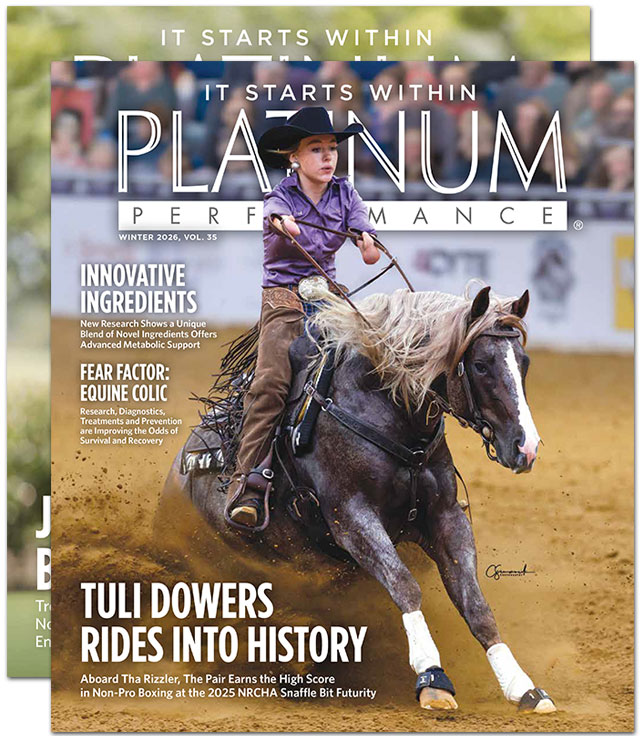The What, Why, Who, When, and How of Supplementing
Horse Joints with Nutrition
The joint is one of the most discussed parts of the equine anatomy. Efforts to keep joints healthy, sound and functioning are at the forefront of the care and management of every horse. The health of each joint is necessary, and even one operating improperly can cause lameness and discomfort to the animal. Maintaining healthy joints and preventing joint issues before they arise is a perpetual focus area for horse owners and veterinarians alike. For horses that are dealing with joint issues, significant and continual research provides options, including nutritional supplementation, to offer support and comfort for horses and hope for the people that love them.
“I have had multiple cases where Platinum Performance® CJ has been a real game changer for my patients.”
— Marilyn Connor, DVM, Palm Beach Equine Clinic in Wellington, Florida
The What
- What is a Joint?
- Are There Different Kinds of Joints?
- Which Joints are Most Likely to get Injured or Compromised?
- What are the Parts of a Joint?
- What do Joints Actually have to do for Movement?
Topics of Discussion
A joint is the point where bone connects to one or more bones. There are three major classifications of joints: fibrous, cartilaginous and synovial. Fibrous joints are the least common and protect against movement. These joints can be found in the skull and are essentially fused together. Cartilaginous joints are connected by cartilage and allow some limited movement such as with pelvic joints, vertebral joints and growth plates. The third type is the synovial joint, which is the most common and includes the ball and socket type and hinge joints. These joints are responsible for the horse’s ability to shake their neck, frame over the bit, lift and flex their legs and absorb concussive forces. They are also the most likely joint type to suffer from injury and disease.
Synovial joints are made up of multiple tissues, membranes and fluid, each part functioning to provide the horse with frictionless motion and seamless movement spanning from quite small to more full range. Joints contain a natural cushion and shock absorber known as articular cartilage. This smooth, slippery and flexible tissue lines the surfaces of opposing bones. The synovial membrane lines the joint capsule. This membrane supplies components of the synovial fluid that fill the joint cavity, lubricate the joints, and help maintain cartilage's compressive-resistant capacity. The synovial fluid contains hyaluronic acid, lubricin, electrolytes, carbohydrates and enzymes. It provides nourishment to the cartilage, which actually lacks blood vessels itself. Cartilage is made up of specialized cells, an extracellular matrix and water. The cells are called chondrocytes and direct the formation and degradation of the extracellular matrix. This extracellular matrix consists of collagen, a protein providing mechanical strength, and proteoglycans, which support the compression-resistant nature of the tissue. Proteoglycans, containing glycosaminoglycans like keratin sulfate and chondroitin sulfate, maintain a negative charge that attracts and holds on to water, the third constituent of cartilage. The synovial lining encompasses these structures, and a fibrous joint capsule surrounds the entirety of the joint with connections to the articulating bones and collateral ligaments.
Equally as important to the actual joint and surrounding capsule are the tendons, ligaments and muscles that hold the joint capsule in place and provide stability. To function optimally, all of these various parts must be healthy, and, when even one is compromised, the entire joint suffers and may result in lameness of varying degrees. Fluid and effortless movement of the horse is indicative of healthy, well-functioning joints.
The Joint: Three Types
The point where bone connects to bone or bones.
1. Fibrous Joints
The least common and do not allow movement. Found in the skull and are essentially fused together.
2. Cartilaginous Joints
Connected by cartilage and allow some limited movement such as pelvic joints, vertebral joints and growth plates.
3. Synovial Joints
The most common. Included are the ball and socket type and hinge joint that offer range of motion for movement. Responsible for the horse’s ability to shake their neck, frame over the bit, lift and flex their legs and absorb concussive forces.

A Closer Look
Articular Cartilage
A natural cushion and shock absorber that lines the surfaces of opposing bones. Composed of an extracellular matrix of collagen and proteoglycans, water and specialized cells (chondrocytes).
Proteoglycans
Composed of protein-linked, sugar-like compounds called glycosaminoglycans that include chondroitin sulfate and keratin sulfate. Affords the cushioning and compression resistance quality to cartilage.
Synovial Membrane
Lines the joint capsule. Releases beneficial glycoproteins for synovial fluid lubrication and smooth movement. Can also produce inflammatory-signaling molecules and degradative enzymes.
Synovial Fluid
Contains glycoproteins, such as hyaluronic acid and lubricin, nutrients for the chondrocytes, which lack their own blood supply and enzymes.
The Why
- Reasons for Joint Support
- The Major Contributors to Joint Issues
- Why does Inflammation Cause Joint Problems?
- If My Horse is Getting Joint Injections, should I also Feed a Joint Supplement?
- Why Should I Give My Horse a Joint Supplement?
Topics of Discussion
There are many different ways to provide joint support. Often, the type of support chosen depends on whether the purpose is for prevention, maintenance or to support an existing joint problem, and whether the problem is acute or chronic in nature. Offering early joint support is usually with the goal of preventing or delaying the development of an issue. In many instances, joint intervention is to treat a lame horse or to help with soundness issues. Five major contributors of joint disease are chronic inflammation, free radical damage, degradative enzyme activity, traumatic injury or overuse and simply the natural aging process. Poor conformation can predispose joint issues by inherently allowing an imbalance that puts more chronic strain on another part or parts of the body.
With all of the “moving parts” that make up a joint, there is much room for error in the way of injury or disease. A common reason for joint health issues points to the incredible importance of cartilage. Healthy cartilage tolerates intense and repetitive concussion. While it is a magnificent and flexible organ, it is unfortunately ill-equipped for self-repair, even to minor insults or injuries due to multiple reasons including its lack of blood vessels. Chronic cartilaginous inflammation may predispose tissue degradation and contribute to the progression of joint disease. Inflammation is a natural and expected part of physiology and, within normal limits, is considered healthy as it stimulates repair and even protects from disease. However, an overactive inflammatory response and especially over an extended period of time can lead to tissue destruction. Equine joints can be affected by both acute and chronic inflammation. For the joint, chronic inflammation can be particularly problematic and overwhelm the natural systems in place to quell it. Repetitive wear and tear, as is seen with chronic types of inflammation, leads to the cartilage breakdown, most commonly occurring in the weight-bearing and high-motion joints of the legs including the knees, hocks, stifles, fetlocks and the coffin joint that resides in the hoof. The joints within the spine can also be affected.
A major focus of joint therapies, whether pharmaceutical or nutraceutical, is to relieve inflammation in or surrounding the joint. Simple icing is often the first step to decrease acute inflammation. Veterinary interventions, such as nonsteroidal anti-inflammatory drugs (NSAIDs) like phenylbutazone, help to reduce pain or inflammation. These tend to be used more short-term due to the gastrointestinal issues that can be found with long-term use. The often-used intramuscular Adequan™ and intravenous Legend™ are considered chondroprotectants, with the primary objective of preventing or delaying cartilage issues. Other veterinary interventions include Pro-Stride, IRAP, shockwave, stem cells — all with the purpose of trying to stimulate regeneration of joint and/or the surrounding soft tissue cells. Intra-articular joint injections using corticosteroids, hyaluronic acid or a combination can help to re-establish lubricating properties and decrease inflammation within the joint capsule. Horses receiving joint injections often have fast-acting and acute support as the synthetic lubricating fluids are injected directly into the joint capsule. They work quickly but eventually wear off and likely will need to be injected again to offer the same support. The repetitive use of corticosteroids may eventually lead to cartilage degeneration.
Oral joint support works differently than, albeit synergistically with, joint injections as supporting ingredients are ingested on a daily basis, pulled into the blood system and available for use by the body when needed. It is a different and generally considered safe option to provide joint support to the horse. “Oral joint supplements provide the nutritional building blocks to help the body build and maintain healthy cartilage, synovial membrane and synovial fluids,” says Marilyn Connor, DVM, Palm Beach Equine Clinic in Wellington, Florida. “I often recommend Adequan™, Legend™ and Platinum Performance® CJ together to hard-working equine athletes. They each have slightly different mechanisms of action and complement each other well to help support overall joint health, maintain healthy levels of inflammation and influence the degenerative process. They all add something to the equation. They all promote joint health.”
Horses do seem individual regarding their response to different joint therapies and a combination approach may be most effective. “Many of the top competing sport horses that I work on receive a combination of injectable joint supplements such as Adequan, Legend, Polyglycan, MAP-5 or pentosan.” Dr. Connor continues, “I would say at least 60 to 75 percent of my high-level competition horses are on some sort of oral joint supplement as well. I have noticed as a veterinarian that the horses receiving a proper dose of a joint supplement, like Platinum CJ, tend to require less frequent veterinary joint intervention when compared to other horses of similar age, training level and type of athletic competition.”
Used independently or in combination with pharmaceutical joint therapies, oral supplementation can be a less invasive, long-term way to provide support. The purpose of joint supplements is to offer some leverage on the ubiquitous inflammation that most horses deal with on some level and at some point. Specific joint-targeted ingredients can be used for all ages and life stages, and are almost synonymous with athletic support supplements for competition horses as well as senior horse supplements.
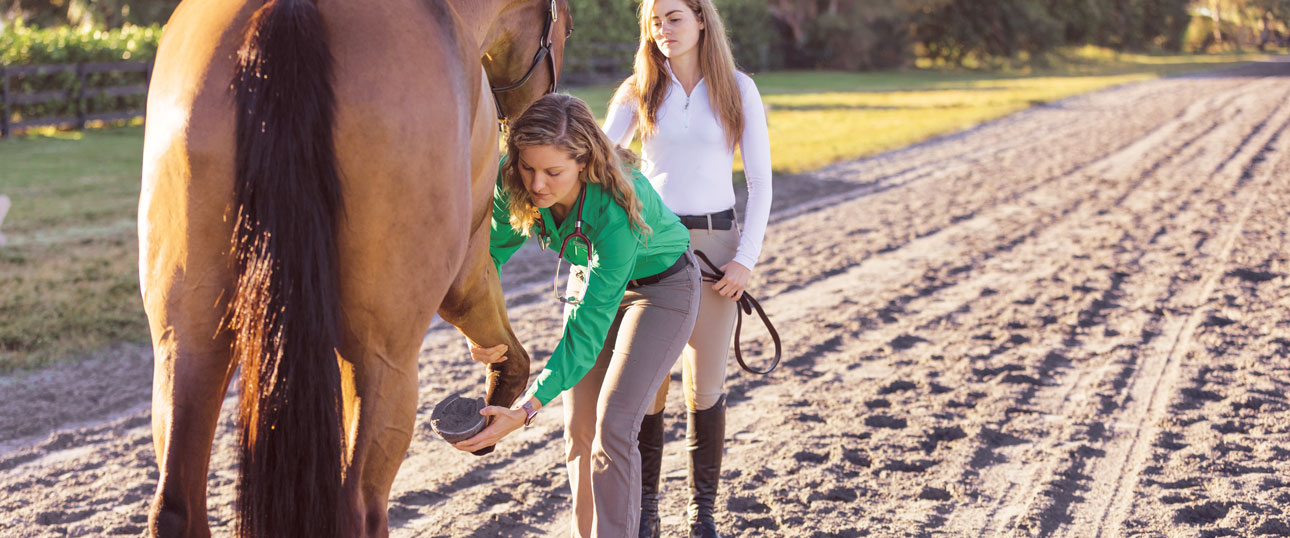
“I would say at least 60 to 75 percent of my high-level competition horses are on some sort of oral joint supplement as well. I have noticed as a veterinarian that the horses receiving a proper dose of a joint supplement like Platinum CJ tend to require less frequent veterinary joint intervention when compared to other horses of similar age, training level and type of athletic competition.”
— Marilyn Connor, DVM, Palm Beach Equine Clinic in Wellington, Florida
Contributors to Joint Concerns and the Nutritional Support That can Help
The equine joints that support movement are comprised of articulating bone ends covered by a protective layer of cartilage. This articular cartilage is composed predominately of collagen and proteoglycan formed as glycosaminoglycans (GAGs) linked to a protein core. The cellular component of cartilage is limited although critical for its surrounding structures. The synovial membrane lines the joint capsule and synovial fluid fills the joint. Damage to any one of these components can be detrimental to the health of the joint.
| Contributors | Support | ||
|---|---|---|---|
|
Inflammation |
 Inflammation |
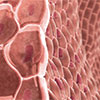 Normal Synovial Membrane |
Ingredients like omega-3 fatty acids, glucosamine, ASU, cetyl myristoleate, Boswellia serrata, turmeric root, tamarind seed and antioxidants help support healthy levels of inflammation. |
|
Excessive Free Radicals |
 Free Radical Damage |
 Healthy Synovial Fluid |
Antioxidants help offset the damaging effects of free radicals, and hyaluronic acid helps maintain synovial fluid viscosity and joint function. |
|
Degradative Enzymes |
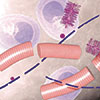 Enzymatic Activity |
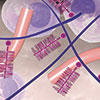 Intact Collagen |
Omega-3 fatty acids can help maintain a healthy level of enzyme expression, and glucosamine is a building block for cartilage components. |
|
Overuse and Injury |
 Injury or Overuse |
 Normal Cartilage |
Silicon supports strength of bone and soft tissues, ASU maintains cartilage and MSM provides sulfur, key for cartilage and connective tissues. |
|
Natural Aging Process |
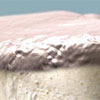 Low-Grade Cartilage Damage |
 Healthy Cartilage |
Omega-3 fatty acids and the extracts of turmeric and tamarind support normal levels of inflammation, and antioxidants help offset the effects of free radicals. |
The Who
- Did you say GAG?
- What Ingredients Should I Look for in a Joint Supplement?
- Does Oral Hyaluronic Acid Supplementation Benefit My Horse?
- I Thought Omega-3 Fats were Brain Food?
- How do Antioxidants Support Joints?
- Which Herbs Help With Joint Health?
Topics of Discussion
Glycosaminoglycans (GAGs) are long, unbranched polysaccharides that are highly polar and attract water, making them critically useful in the body as a lubricant and shock absorber. GAGs form an important component of connective tissues and are key to normal, healthy joint function. Glucosamine is an amino-sugar that can be a building block for GAGs and cartilage. It may promote the production of new GAGs and slow cartilage breakdown. Glucosamine has also been shown to provide antioxidant support. Hyaluronic acid (HA) is a GAG and a major contributor to synovial fluid’s lubricating benefits that reduces friction between bones during movement. In doing so, HA helps maintain healthy joint function. Although it is commonly-administered via intra-articular injections, orally-administered HA has been shown in several studies to be both bioavailable and effective in supporting joint health. HA is often used to support existing joint conditions or for horses subjected to activities that can lead to joint degradation. Methylsulfonylmethane (MSM) is a sulfur-containing compound and product of DMSO (Dimethyl Sulfoxide) that is often advocated for joint support. MSM is a bioavailable sulfur source, and sulfur is a major player in joint tissue structural integrity. Sulfur is part of every glycosaminoglycan except hyaluronic acid. Animal studies have shown MSM can help maintain healthy skin, coat and hoof quality. MSM can serve as support against unhealthy levels of inflammation and oxidative stress in the horse. Avocado/Soy unsaponifiables (ASU) is a newer and game-changing ingredient in the oral joint support armory. It is a natural vegetable extract from avocado and soybean oils containing a class of biologically active compounds classified as unsaponifiable lipids. ASU has been shown in university studies to both promote the building of cartilage as well as slow its breakdown. Additionally, ASU supports normal inflammatory pathways and has been shown to promote the production of GAGs in joint tissue. ASU has been demonstrated in studies to be effective in promoting healthy joint function. Cetyl myristoleate is a naturally-derived ester of an omega-5 fatty acid that helps maintain joint health, in part, through the inhibition of oxgygenase enzymes that form inflammatory regulators. It is effective in supporting arthritic discomfort and promoting mobility and joint functionality.
Omega-3 fatty acids are essential fatty acids, indicating that they are not produced by the body and therefore must be consumed in the diet. Omega-3s are important for cellular health and can help support normal, healthy levels of inflammation in the body, as well as help maintain joint health and multiple other aspects of wellness. Most important to the joint health is that dietary omega-3 fats have the ability to inhibit aggrecanase, an enzyme involved in degrading the proteoglycan content in articular cartilage.
Fighting Free Radical Damage
Free radicals are chemicals produced in a horse’s body as a result of normal metabolism, or in response to exercise, inhalation of dust and air pollutants, ingestion of rancid feeds and exposure to ultraviolet light. Free radicals can damage cell structures, like membrane proteins and lipids. This can lead to the damage noted in arthritic joints and other tissues. Antioxidants are naturally in place in the horse to deal with neutralizing free radicals under normal conditions. Supplementation is warranted to help deal with elevated levels of free radicals that can lead to oxidative stress, such as is the case for exercising horses, horses with health conditions or other variations of bodily stressors or for those on a high grain diet. Oxidative stress is another culprit for joint aggravation. Vitamin C (ascorbic acid) is a water-soluble vitamin with strong antioxidant actions, protecting against free radical attack. Vitamin C is required for the development of cartilage and the formation of collagen, making it much needed for healthy joints and connective tissue. Vitamin E is a potent antioxidant and, working with vitamin C, reduces the damage of free radicals and is often supplemented for this purpose.
How Herbs Can Help Your Horse
Certain herbs and botanicals have been used for centuries by humans searching for joint-related pain relief. Boswellia serrata also called Indian frankincense is an Ayurvedic herb used since ancient times in Hindu medicine that can help support joint and connective tissue health. Boswellia supports normal levels of inflammation. Cat’s claw (Uncaria tomentosa) is a botanical from the Amazon River basin used for many therapeutic purposes dating back to the Inca civilization. Cat’s claw supports normal inflammation in cells. Devil’s claw (Harpagophytum procumbens) is a South African plant whose root has been proven to help relieve occasional joint discomfort and support a normal inflammatory response.
Ingredients That Support the Equine Joint
Glucosamine is an amino-sugar that can be a building block for glycosaminoglycans (GAGs) and cartilage and has also been shown to provide antioxidant support and to help maintain joint health.
Hyaluronic Acid (HA) is a GAG and a major component in the lubricating synovial fluid of articulating joints and the proteoglycan content of cartilage.
Methylsulfonylmethane (MSM) plays a significant role in joint health by providing a bioavailable sulfur source that is a key component in most GAGs, cartilage, tendons and ligaments.
Avocado/Soy Unsaponifiables (ASU) has been shown in university studies to both promote the building of cartilage as well as prevent its breakdown.
Cetyl Myristoleate helps maintain joint health by working at the precise location of joint inflammation.
Omega-3 Fatty Acids are important for cellular health and can help support normal, healthy levels of inflammation in the body, which is supportive of joint health and other aspects of wellness.
Turmeric Root Extract is a botanical extract that supports healthy levels of inflammation and has far-reaching effects on digestion, immune health, metabolism, seasonal allergies and joint function.
Tamarind Seed Extract comes from a tropical evergreen and offers extensive joint support by helping to address bone and joint structural integrity and inflammation.

“Joint supplements are best used proactively! The main idea is to support the normal inflammatory cascade within the joint, support normal, healthy cartilage, promote the production of normal synovial fluid and, in general, support the health of the joints.”
— Marilyn Connor, DVM, Palm Beach Equine Clinic in Wellington, Florida
The When
- When Should I Give a Joint Supplement?
- My Horse is Young, When Should I Think About Supplementing His Joints?
- Supplementing the Equine Athletic Joint
- What is Arthritis?
- My Horse is a Senior, Will Supplementing His Joints Help Him Stay Comfortable?
Topics of Discussion
When to start supplementing for joint health depends on whether it is being used for prevention, maintenance or if there is a current health concern. Dr. Connor weighs in, stating, “Joint supplements are best used proactively! The main idea is to support the normal inflammatory cascade within the joint, support normal, healthy cartilage, promote the production of normal synovial fluid and, in general, support the health of the joints. A proactive approach is best in my opinion. As the old saying goes, ‘an ounce of prevention is worth a pound of cure.’ ” Young, sound horses will likely require less support compared to a hard-working athlete or a senior horse with chronic stiffness. Many people will supplement with single or more basic ingredients for prevention with the thought to use a more advanced approach for when it may be needed futuristically. Providing a joint supplement, particularly one that offers other whole-horse supporting ingredients, such as omega-3 fatty acids and antioxidants, can benefit every horse. “I believe it’s never too early to start adult working horses on a high-quality joint supplement,” Dr. Connor agrees. “We ask a lot, especially of our equine athletic partners, and it takes years or even decades to develop a young horse into a top competitor. Most riders and trainers would like to see their horses have a long athletic career, and joint supplementation is one way to help athletic horses stay sound and performing at their best for the longest time possible.”
Arthritis is the most common cause for lameness in the horse. While arthritis is inclusive to any joint inflammation, osteoarthritis is an inflammatory condition that involves the degradation and breakdown of the cartilage that lines the ends of the bones of the joint and is often considered a degenerative joint disease. As previously discussed, cartilage offers a compression-resistant quality that can only exist when the extracellular matrix structures are intact. Breakdown of collagen and proteoglycans diminishes the horse's ability to withstand excessive or irregular forces, which can lead to pain and lameness. While arthritis can affect any horse, it is often seen as horses age. Advanced arthritis may include the loss of cartilage, poor synovial fluid production and possibly a buildup of bone around the joint itself. Other inflammatory joint issues include chronic and acute synovitis, which is the inflammation of the synovial membrane, and osteochondritis dessicans (OCD). Joint supplements may help to support joint fluid production, a normal inflammatory response, normal cartilage breakdown and are often advocated for horses with arthritis and senior horses.

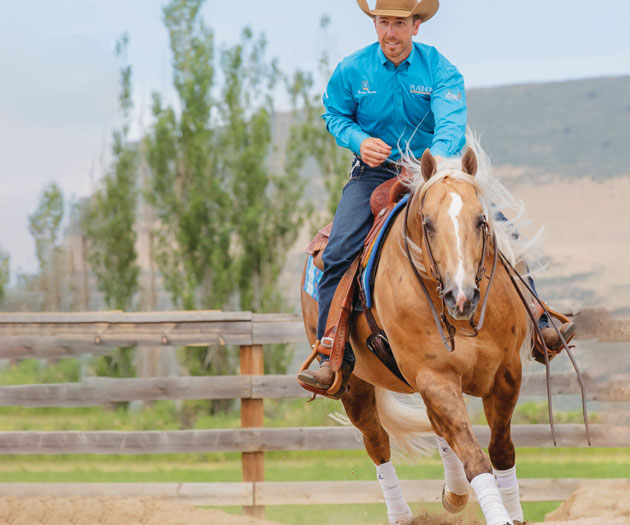
“With all the options out there, I choose to recommend Platinum to my clients for several reasons. The products are veterinarian-developed and formulated based on science and solid research. They use extremely high-quality ingredients and have high quality control; they never sacrifice quality to cut costs.”
— Marilyn Connor, DVM, Palm Beach Equine Clinic in Wellington, Florida
The How
- How do Joint Supplements Help My Horse?
- Is It Too Late to Start Supplementing My Horse That has a Joint Issue?
- How Long Does It Take to See If They are Helping?
- Does Quality Matter?
- How Does Form Affect Function?
- How Do I Choose What is the Best Joint Supplement for My Horse?
Topics of Discussion
Ingredients offered in a joint supplement typically serve one or more of these purposes: to support normal inflammation, to help promote cartilage synthesis and other joint components or to promote normal levels of certain enzymes that degrade joint tissue. For instance, the commonly used and well-studied joint ingredient, glucosamine, is a natural building block for cartilage tissue. For existing joint concerns, a comprehensive joint supplement is often the best way to provide joint support as different ingredients may offer support to different parts of the joint as needed. Dr. Connor notes, “A proactive approach is best, but most people wait to start joint supplements until there is a problem, which is still helpful.” A daily supplement allows nutrients to be consistently available to the body and actively working to support the many aspects of the equine joint. Once starting a joint supplement, full cellular saturation should be accomplished after 30 days, although anecdotally benefits may occur prior to then.
The nutraceutical industry is vast, with hundreds of joint products available for horses. Quality is a major factor when it comes to joint supplement ingredients. In most cases, a low-cost option is less effective. “With all the options out there, I choose to recommend Platinum to my clients for several reasons,” says Dr. Connor. “The products are veterinarian-developed and formulated based on science and solid research. They use extremely high-quality ingredients and have high quality control; they never sacrifice quality to cut costs. Platinum is never going to be the low-cost option, but you get what you pay for.” The actual form of an ingredient matters greatly and bioavailability to the horse relies upon it. For example, vitamin E occurs in eight different chemical forms with the natural form, d-alpha-tocopherol, being the most common and undisputedly superior form for bioavailability and biological activity compared to its synthetic counterpart, dl-alpha-tocopherol.
Self-imposed processing procedures and obsessive quality control is imperative to provide the most efficacious products for horse owners. Platinum Performance ® boasts the use of human-grade ingredients, in-house production and packaging in an FDA/cGMP facility in California as well as the seal of approval from the National Animal Supplement Council (NASC) for quality assurance. “Platinum stands by their product and will issue their money-back guarantee without hesitation and for any reason,” Dr. Connor continues, adding, “I trust that. My clients trust that.” Platinum Performance® subjects each and every formula to exhaustive safety protocols with multiple phases of testing for quality, potency, purity and over 200 banned substances. From a child’s first pony to Olympic contenders to senior retirees, every horse deserves the best.
Why doesn’t Platinum Performance® use Chondroitin?
Chondroitin sulfate is a naturally-occurring substance in the joint capsule, so supplementing it seems intuitive. However, due to concerns regarding quality of chondroitin sources, and the great results Platinum Performance® has seen for 25 years with the current formulations, it continues to provide chondroitin-free joint support products that they stand behind. Platinum Performance® strives to offer products with the highest quality and most effective ingredients available.
Why is Platinum Performance® CJ the Best Joint Supplement for Horses?
Platinum Performance® CJ is the only supplement of its kind — combining cartilage-supporting Avocado/Soy Unsaponifiables with other joint-focused ingredients glucosamine sulfate, MSM, cetyl myristoleate and hyaluronic acid with a whole-horse wellness formula that supports every part of the horse. It is the most potent formula for joint support and is popular with performance horses and senior horses because it addresses joint health from all angles.

by Emily Smith, MS,
Platinum Performance®

